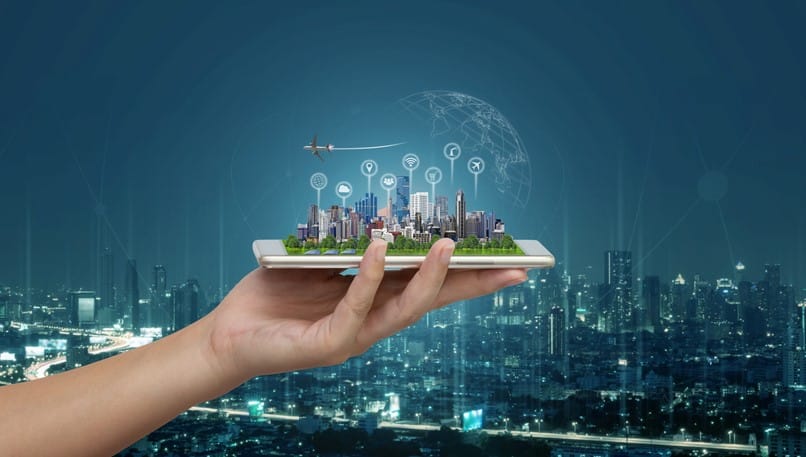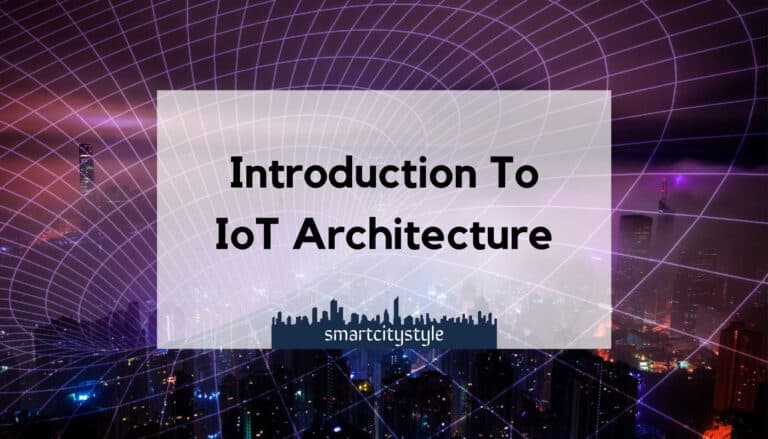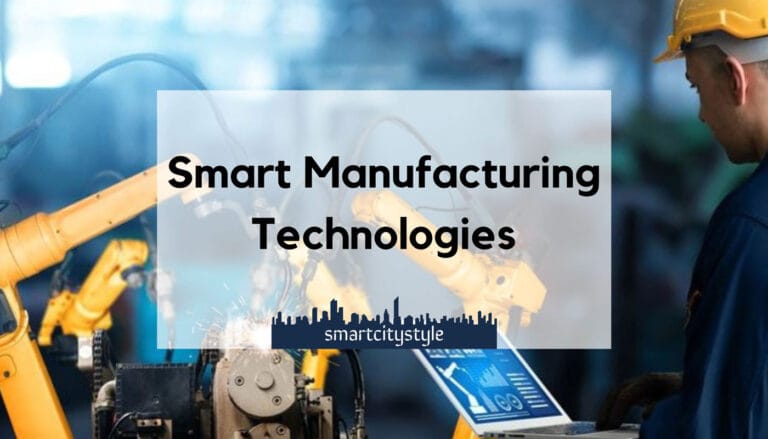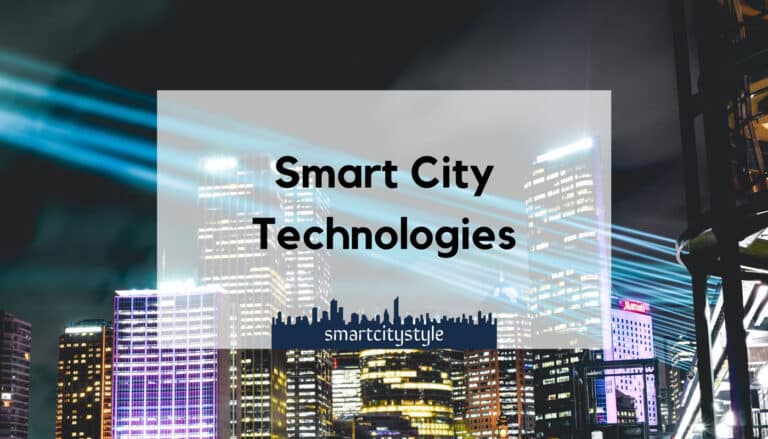IoT Projects for Urban & Metropolitan Cities- Top 5 Applications
IoT and IoT projects could answer a range of urban problems. Urban and metropolitan cities are typically densely populated, introducing congestion challenges requiring urgent attention.
There is increased competition for meager resources and exposure to natural and manmade difficulties. The pressure grows as more people migrate to cities for employment and other opportunities.
Top 5 Applications of IoT Projects for Urban and Metropolitan Cities
The internet of things (IoT) offers a unique opportunity to facilitate sustainability and ensure the limited resources get to all city dwellers.
It has a wholesome view of the entire population and the resources available to sustain it. It also comes with management and distribution tools that leverage the latest technology for efficiency.
Let’s look at some critical IoT projects that are being applied to tame the pressures of urbanization and develop self-sustaining hubs for the future that are safe and comfortable for human coexistence.
1. Smart Parking Management
Parking is a common headache for big city dwellers. Some smart parking systems rely on in-ground vehicle detection sensors. The sensors identify empty parking spots and transmit when a vehicle leaves a parking area. They also display the location of the open parking spots on a real-time parking map.
Other systems use feedback from vehicles to pinpoint available parking. This information is transmitted through local signal processors and available to a driver through their IoT device, like an app they download on their smartphone. In addition to displaying available parking slots, these programs can also show the driver’s location and current pricing.
Vehicles closest to the open parking slots can get alerts for the most convenient parking for their current location. The alerting system uses local signal processors, and drivers can use their smartphones to locate these spots instead of driving blindly around the city.
Aside from the convenience, smart parking solutions come with improved safety, reduced traffic congestion, and a decline in carbon emissions. The infrastructure doesn’t have to be complicated, so this type of IoT project is something that even small cities can implement.
Here’s a video on how most smart parking systems work:
2. Smart Traffic Management System
Traffic optimization is a universal big-city problem that renders an IoT solution long overdue. A traffic monitoring system can control smart traffic lights connected to vehicles via the internet of things through IoT sensors.
Some smart traffic systems rely on sensors integrated into pavements and can transmit real-time traffic data to a centralized traffic management point. Other systems fetch GPS data from drivers’ cellphones to establish the concentration of drivers at a location and the speed with which they are driving. CCTV cameras can also determine traffic congestion. Different combinations of these IoT points can be used together to enhance data accuracy.
The IoT analyzers the provided data and adjusts the lights based on the current traffic situation. Green lights stay green longer when there’s a lot of traffic and turn yellow faster when there aren’t a lot of vehicles on the road. The traffic server employs machine learning algorithms to break down the data to optimize traffic flow.
The entire process is automated, so there is no chance of bias or human error. The traffic management system also monitors and records light timings, applying this data to predict traffic patterns and design smart traffic solutions that factor in potential congestion phases.
Traffic flows smoothly in these cities, and vehicle congestion at intersections is mitigated so that drivers can get from one point to another without losing precious time and resources. A good example is the cellular vehicle to everything (CV2X) network, where light switching is based on traffic conditions.
Historical data is used to establish traffic patterns critical for city planning. Sometimes the congestion is due to the wear and tear of roads and bridges. In this case, authorities will be alerted to initiate repairs by analyzing traffic pattern data. This data will also come in handy when designing future roads.
Traffic management systems are well complemented with the smart parking system mentioned earlier. A combination of the two can ease traffic and carbon emissions in your city significantly.
3. Smart Waste Management
Garbage disposal can also benefit from IoT deployment, which enhances efficiency and reduces operational costs. A lot of unwarranted fuel consumption and unproductive application of waste containers is seen in traditional waste collection operations that rely on fixed and predefined schedules.
For smart waste management, the trash bin or waste container is fitted with an IoT device that is part of a monitoring system. This device functions as a level sensor and transmits the amount of garbage inside the trash can and its location.
Garbage truck drivers get notifications on their smartphones about trash bins due for collection so they can plan their routes and use the shortest one to access the targeted containers.
Municipalities can reach every container within the IoT project before it overflows. Because they know what trash cans need to be emptied, they don’t waste resources checking on bins that are not in use or whose contents don’t require intervention. Machine learning enables the system to use garbage collection data to predict waste generation levels for planning purposes.
IoT application to garbage collection in urban and metropolitan cities significantly reduces operational and environmental costs and increases efficiency while ensuring trash doesn’t pose a health risk. Poor waste management practices can lead to soil, air, and water pollution, creating a breeding ground for pests and pathogens.
4. IoT Solutions for Urban Environmental Sustainability
City management and urban planning need to address the environmental impact of their social and economic activities for the cities to be sustainable. Industrial IoT applications can play a significant role in making the urban environment eco-friendly.

Economic Use of Sustainable Energy
The term smart city implies the constant availability of energy to power electronics and other physical devices that enable the implementation of smart functions. This energy comes at a price, and smart consumption should enable regulation and optimization.
Renewable energy application reduces pollution in the city. These energy sources are typically variable as they rely on weather conditions. IoT enables power generators to optimize their processes to meet consumer demands using limited resources. You can primarily use solar to power electronics and make it easy to own electric and self-propelled vehicles, keeping carbon emissions low.
Besides production, transmission and distribution should be optimized. IoT projects can employ smart grids and smart meters to take care of this. IoT can sustain smart energy transmission by switching automatically between renewable and non-renewable energy, reducing the net carbon emission of your energy consumption.
Another way for IoT projects to be environmentally friendly is by checking pollution. The system can set parameters for a healthy environment that can be tracked using IoT sensors to ensure environmental conditions are maintained at optimal levels.
Air Quality Management
Deploy a network of sensors where you feel like pollutants are concentrated, like along busy roads and close to manufacturing plants. They will instantly capture pollution data, like the concentration of carbon in the air, emissions from vehicles in relation to the traffic volume, and the airflow direction, among others.
Their readings are then transmitted to a smart cloud server with machine learning capabilities that will analyze them and paint a picture that is discernible to human senses.
Environmentalists and city planners will use these readings to determine areas where pollution is worrying so that they can address the root cause and come up with ways of mitigating these emission challenges. This information is also used to forecast future emissions and impacts recommendations for city planning.
Water Quality Management
Water quality is managed using a network of sensors along the water grid. The sensors measure water properties, like the concentration of dissolved ions, oxygen, and pH levels, and can measure the water level and pressure at different points in the grid.
The system will detect if there are any changes in pressure or composition, which are signs of leaky or blocked pipes and possible contamination. Any change triggers an alert to the water maintenance team. The real-time feedback ensures there is no waste or loss of water and that the grid gets service when needed. It also ensures city residents are not exposed to contaminated water or water shortages.
5. Smart Infrastructure
Infrastructure is critical in the implementation of the Internet of Things. The embedded devices and firmware that are the backbone of the IoT world need to be accommodated somewhere. You can only execute all the above project ideas with supportive infrastructure.
For instance, roads in a smart city will be embedded with IoT technology that supports a weather reporting system that updates drivers in real-time so they can drive safely. They are warned of possible hazards like landslides and heavy snow so they can plan accordingly.
An abundance of electric vehicle charging stations will encourage more people to use electric cars. Smart streetlights controlled by motion sensors operating on demand can optimize energy consumption. They only light up when someone is walking by, and their brightness adjusts to the ambient light. Plus, they facilitate IoT data collection so authorities can monitor daily usage.
Servicing and caring for street lamps is simple and cost-effective. They are connected to a cloud management system that adapts a lighting schedule from gathered data. The lights collect data on people’s movement, public transport schedules, and how busy the streets are at different times.
In IoT project cities, even the buildings are smart. Some have energy monitoring systems that track the energy consumed by appliances and physical devices in real-time. This enables the management to initiate measures that will avoid wastage and optimize consumption.
Your typical IoT project architect will recommend a home automation system that you can use to enforce security, optimize utility consumption, and schedule maintenance. The latest technology on the IoT platform for a smart home features connected devices like access control systems, wireless alarms, IP surveillance cameras, biometrics, and motion-detecting lighting, among others.

IoT facilitates the connection of utilities such as lighting, heating, air conditioning, etc. This makes it possible to control them from a single point, increasing efficiency and reducing the cost of running buildings.
Temperature and air conditioning can be set in response to prevailing weather conditions, and monitors can be fitted in buildings to gauge air quality so that air conditioning is only triggered when necessary.
IoT Projects for Cities-The Future
As more and more people migrate to the city, the strain on resources is becoming more pronounced. The quality of life is expected to reduce without the intervention of the internet of things. City planners should know that organization is the only thing that prevents chaos amidst congestion.
Inspired? Pin it!







